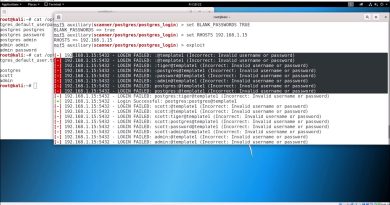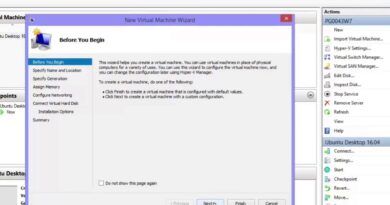Linux Security & Hardening, The Practical Approach – learn Network & Security
link to this course
https://click.linksynergy.com/deeplink?id=Gw/ETjJoU9M&mid=39197&murl=https%3A%2F%2Fwww.udemy.com%2Fcourse%2Flinux-security-hardening%2F
Linux Security & Hardening, The Practical Approach – learn Network & Security
Best Network & Security Course
Linux Security guide with practical hardening tips to prevent Linux server from hackers & protect it against hacking.
Physical Security of a Linux Box,BIOS Firmware Security,Single User Mode Security (RHEL6,7),Securing Boot Loader,Overview of PAM Security,Concepts of PAM,PAM Modules & Configurations,Control Flags in PAM,User Account Security,Forcing strong passwords,Security by Account Locked,Understanding Password Aging Policy,Overview of File & Directory Permission,Controlling files with ACL,General Security,Overview of Network Security,Securing SSHD,Linux Firewall,Port forwarding & Masquerading using firewall,Implementing Mandatory Access Control with SELinux,SELinux Security Concepts,Audit logs & Troubleshooting SELinux
PC or Laptop with internet Connection,Introduction,· About Security,· Tips & Tricks,,Physical Security of a Linux Box,· Overview of Physical Security,· BIOS Firmware Security,· Set BIOS Password,· Single User Mode Security (RHEL6/7),· How to set password at Single User Mode,· Securing Boot Loader,· Section Summary,,PAM (Pluggable Authentication Modules),· Overview of PAM Security,· Concepts of PAM,· PAM Modules & Configurations,· PAM Module Groups,· Control Flags in PAM,· PAM Modules,,Account Security,· Overview of User Account Security,· User Account Information,· Forcing strong passwords,· Pam_pwquality – Password strength-checking,· Security by Account Locked,· Account Locked using pam_faillock PAM module – Lab Session,· Understanding Password Aging Policy,· Practice Lab Session,,File System Security,· Overview of File & Directory Permission,· Access mode,· Change Permission & Ownership,· ACL,· Controlling files with ACL,· ACLs demo,· Practice Lab Session,,General Security,· Keep your system updated,· Disable USB stick,· Turn off IPv6,· Restrict users to use old passwords,· Check password expiration,· Verify accounts for Empty password,· Verify accounts for “Zero” UID,· Review logs regularly,· Keep /boot as read only,,Network Security,· Overview of Network Security,· Openssh Security,· Securing SSHD,· Linux Firewall,· Packet flow via firewall,· Configuring the Firewall from the Command Line,· Enable, Disable services at firewall,· Port forwarding in firewall,· Secure web server via firewall,· Masquerading & port forwarding – Lab Session,· Rich rules using firewalld,,Implementing Mandatory Access Control with SELinux,· How SELinux Can Benefit a Systems Administrator?,· SELinux Security Concepts,· SELinux Modes,· SELinux – Lab Session,· Configuring SELinux Contexts,· SELinux Booleans,· Audit logs & Troubleshooting SELinux,,There is no formal prerequisites for this course, however, previous system administrator experience on other operating system would be very beneficial.Graduate Students and also for those who are in job in Linux Administration & wants to get hands-on practical experience on Linux Security & Hardening,There is no formal prerequisites for this course, however, previous system administrator experience on other operating system would be very beneficial.,Graduate Students and also for those who are in job in Linux Administration & wants to get hands-on practical experience on Linux Security & Hardening
by Lau Tren68
linux web server



